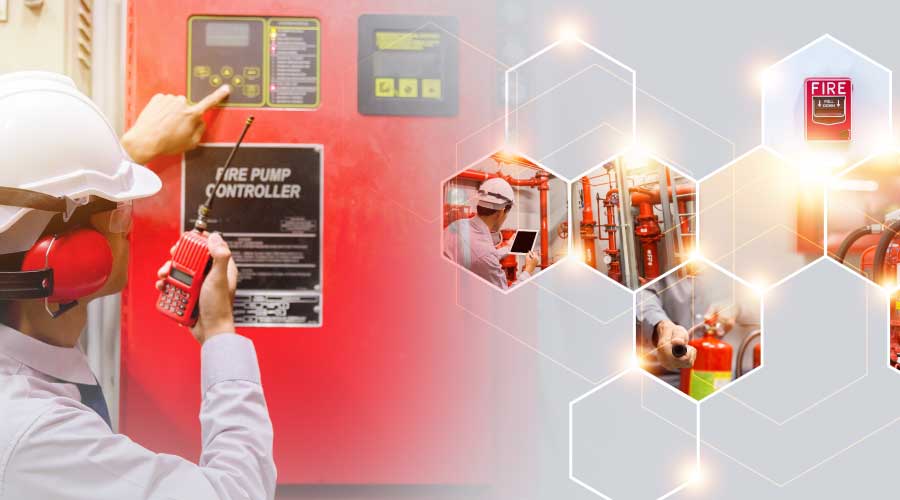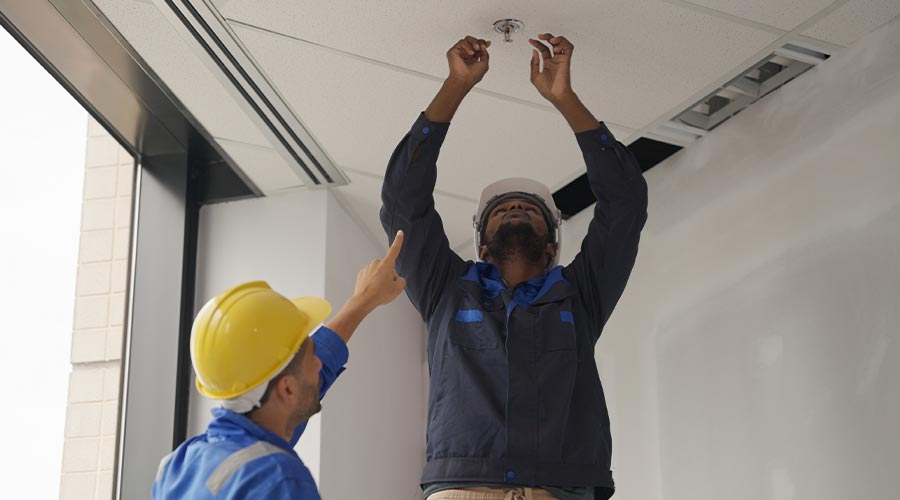Meeting Health Care Fire/Life Safety Regulations Requires Regular Checkups
Health care construction and facility operations are among the most heavily regulated industries in the United States. It's easy to see why: In general, the patients are considered incapable of self-preservation. As a result, the staff has to direct the emergency procedures for patients and visitors.
The focus on fire/life safety compliance doesn't end when construction is completed and occupancy begins. On the contrary, ongoing inspection, testing and maintenance are mandatory, and the authorities having jurisdiction (AHJs) will demand documentation. They will ask:
- Have you analyzed your testing results?
- What is your plan to correct the issues?
- How are you handling the impairments?
To be ready for this level of review, health care facility managers need to have a good grasp of the many requirements for ongoing testing, maintenance and documentation.
Health care facilities use a concept known as defend-in-place to protect their vulnerable population. A defend-in-place approach consists of egress systems; passive fire-resistive containment and separations; and active fire protection systems such as fire detection and alarm, automatic sprinklers and other automatic suppression systems, stair pressurization, and smoke control. This package of passive and active systems provides the code-required level of life safety for the health care facility.
Defend-in-place is a key element of the criteria used to accredit facilities. Ongoing compliance requires steps to ensure that the active and passive systems remain functional and effective. That means, after initial construction and issuing of an occupancy permit, the focus of a facility manager shifts to inspection, maintenance and ongoing testing of the fire protection systems.
It's easy to overlook passive fire protection systems — like firewalls, fire doors, fire dampers and smoke dampers — but these items all require inspection and maintenance. Most of this work can be performed by the facility staff. Reference standards like NFPA 80: Standard for Fire Doors and Other Opening Protectives, NFPA 90A: Standard for the Installation of Air-Conditioning and Ventilating Systems, and NFPA 101: Life Safety Code outline the required inspection, testing and maintenance measures for most passive systems. Documentation of this work must be maintained to demonstrate compliance. Typical inspections check for functionality. Some examples:
- Doors must close and latch.
- Fire/smoke dampers must operate.
- Holes in fire-rated walls must be protected by the proper through-penetration assembly.
Attention to Detail Brings Perfect TJC Score
Non-event. That's not the way most health care facility managers would describe a survey by The Joint Commission (TJC). These audits of fire/life safety practices are conducted with a rigor that can be painful for facility managers who aren't well prepared.
But non-event is just what TJC surveys should be, says Bert Gumeringer, director of facilities at Texas Children's Hospital. And they can be non-events if facility managers focus day by day on the details of education, inspections and data reviews. "It's the constant process of asking the questions about what you're doing and are you implementing the appropriate things to make sure the facility is in the highest level of fire safety readiness," Gumeringer says.
That's the approach at Texas Children's. A generator being taken down for service triggers a series of questions. How long was it down? Did you have another generator in service? Did you implement interim life safety measures?
"We have a saying at Texas Children's," Gumeringer says. "'Inspect what you expect.' We do a lot of inspection. As a result, our paperwork has improved dramatically, our above ceilings inspections have improved dramatically."
Those are important measures. A good process for managing work above the ceiling will address the No. 1 issue cited by TJC: problems with fire and smoke penetrations. Lack of follow up on paperwork for maintenance items is another common problem.
Gumeringer's approach has paid off: Texas Children's got a perfect score on the May 2011 survey. But the survey wasn't the primary reason the program was started six years ago. "The bottom line in all this is, it's about patient safety," he says.
As an organization, Texas Children's is committed to the program and provides the staff time and other resources required. That buy-in from the top is important, but Gumeringer believes facility managers can institute a successful program even without it. "The outcome of putting a program in place like this is very obvious and pays big dividends to the organization," he says.
For facility managers interested in taking the first step, Gumeringer advises reaching out to peers. "There are a lot of folks like me that have been doing this a long time," he says. "We're more than happy to share our programs."
— Edward Sullivan, editor
|
Related Topics:















